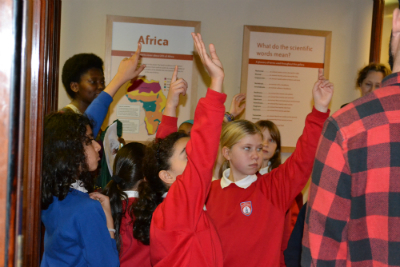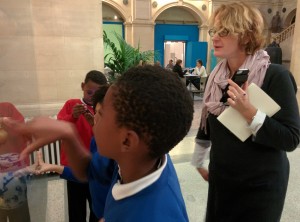At it’s core, our Hidden Museum app takes users on a tour around the Bristol Museum, guiding them to places in the museum they might not ordinarily go, and revealing hidden information as they progress through the game.
To simulate this experience our assistant creative director, Rich Thorne, behaved as the app, using one of the story-tours we had created; he did this by leading the group around the museum around a range of artifacts on a theme (in this case ‘horses’) and engaging them in conversation about each artifact as they went – explaining how they were linked and telling them an interesting story about each artifact once it was found.
The aim of this was to:
- See how long it took them to get round the journey as a group.
- Get feedback from the children on any standout points of interest on the tour.
Key observation points for the supervisors of the tour were:
- Is the tour engaging, interesting?
- Is the tour too long/short?
- Which object was the favourite on the journey?
- Have they visited the museum before?
- Have they ever been to the top of the museum?
- Is it more fun having a checklist? As opposed to walking around the museum looking at everything.
- Do they have ideas for trail themes which would they like to go on?
What we found:
We discovered that the tours which we had devised contained too much identification in advance about what the group were going to see. For example, the horse trail said in advance that the group are going to find objects about horses in them. This was taking some of the excitement out of the tour. We needed to find a way to work on the themes in order to broaden them out to become more subjective and feel less curated.
We also learnt that this kind of curation meant that we were not making the most of the ‘hidden’ metaphor of our app. Whilst we were leading the group to areas they might not otherwise have gone to, it did not allow for enough free exploration of rooms and free thought around the objects themselves – getting lost in the museum and ‘accidentally’ discovering something hidden should be a desirable side effect of the app so we needed to find a way to allow for this.
The groups, particularly the kids, were very interested in collecting and counting. They were also particularly keen on emotive subjects – picking out items which were ‘weird’ or ‘strange’ or ‘scary’ or ‘cute’.
